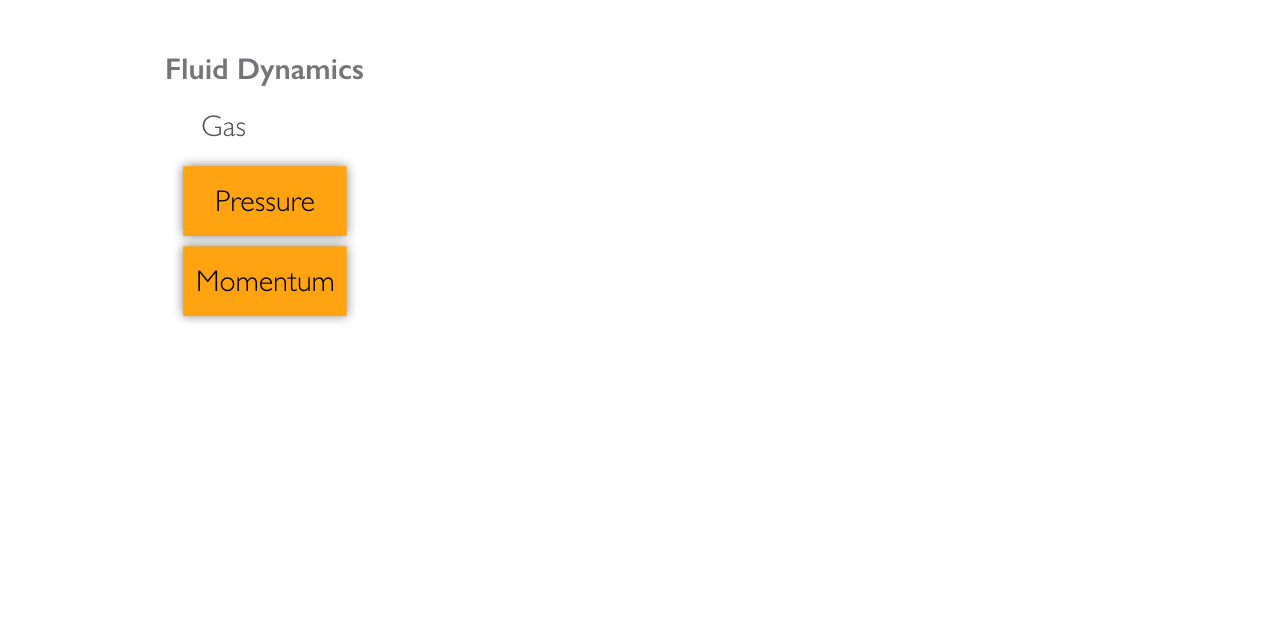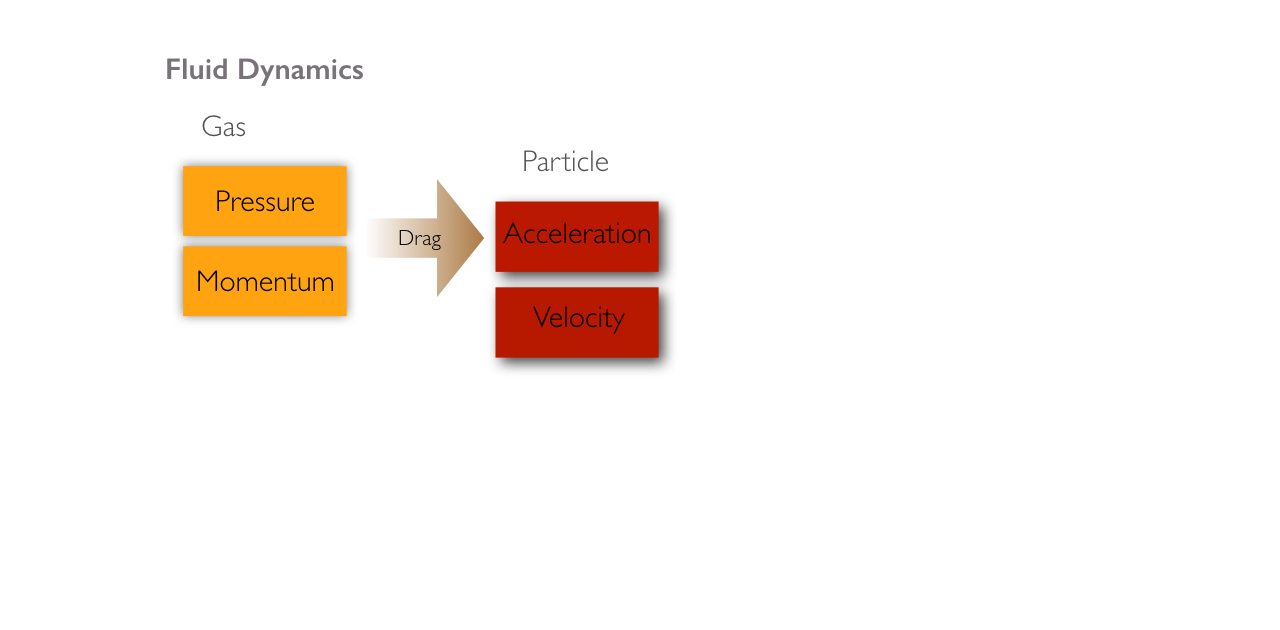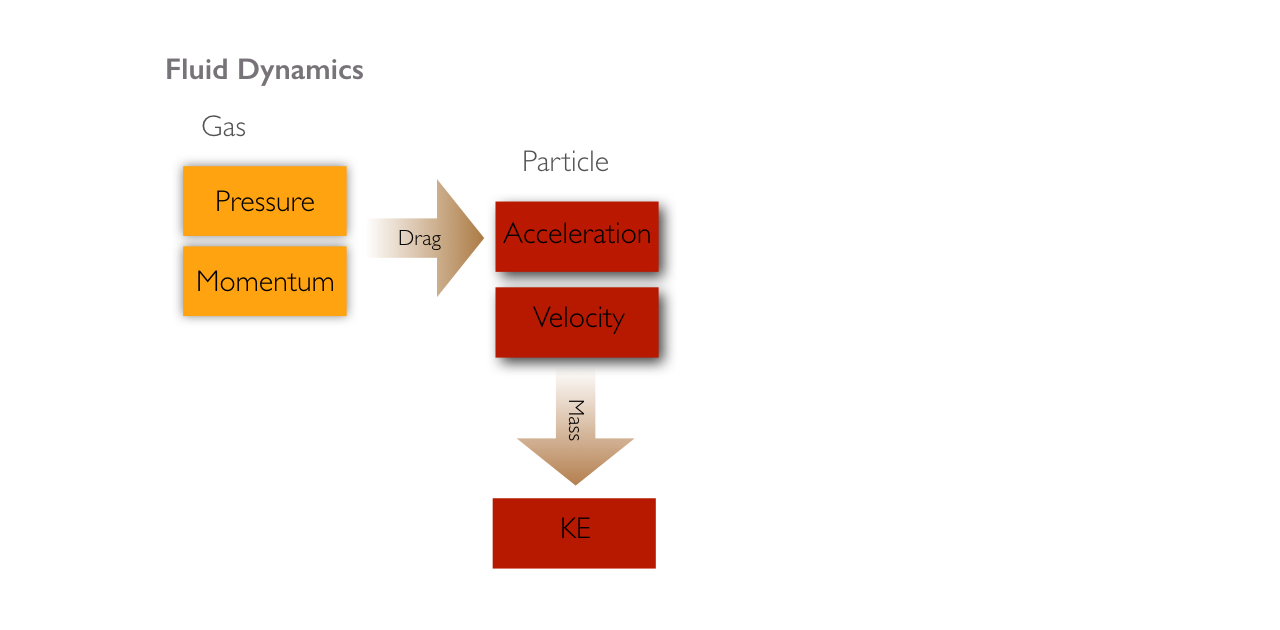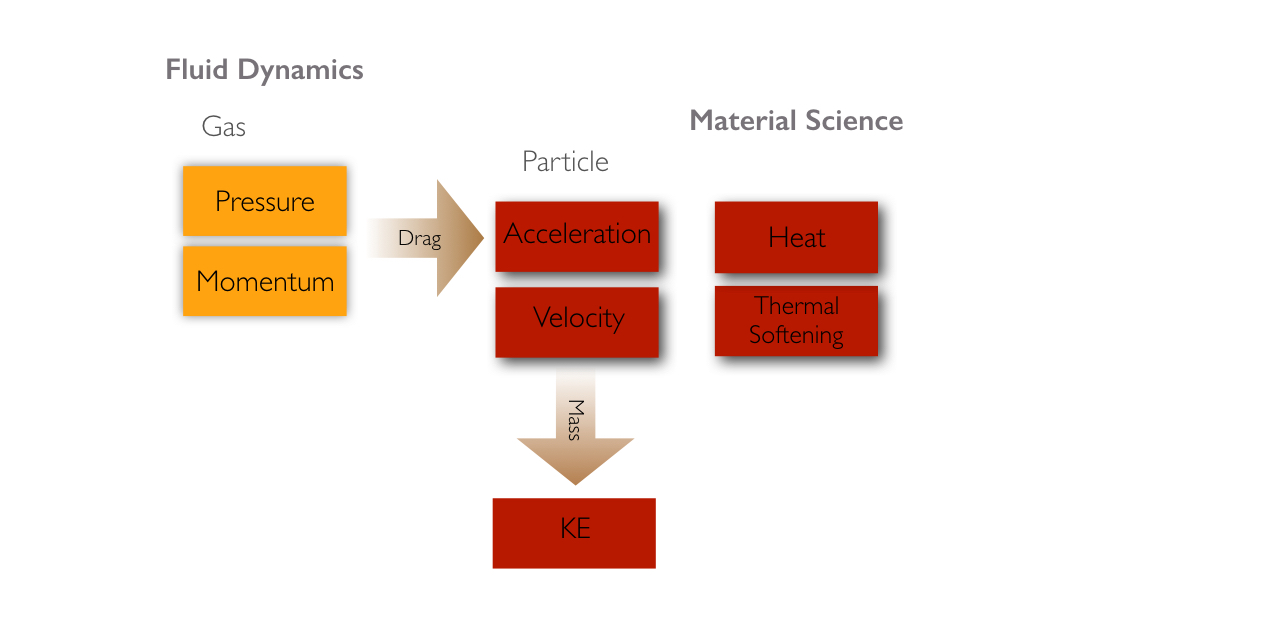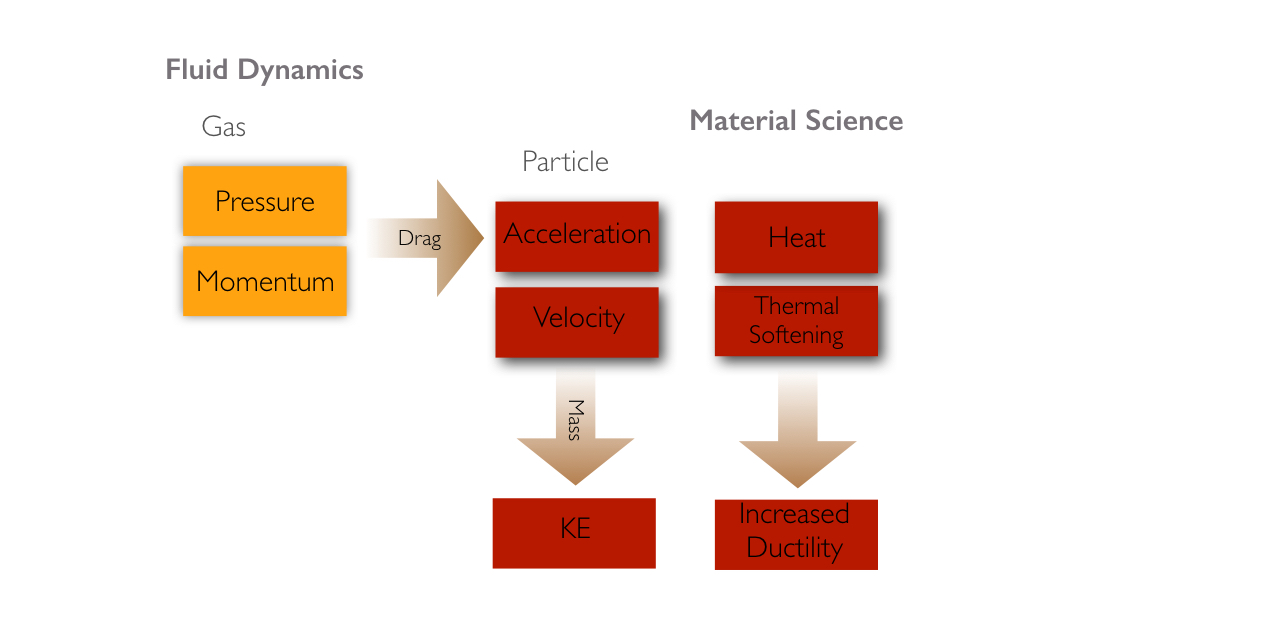Kinetic Metallization: KM Flow Process
Flow Process
The Kinetic Metallization™ (KM) process converts the potential energy of a compressed carrier gas and thermal energy from the thermal conditioning unit (TCU) into kinetic energy of powder particles. The carrier gas (usually helium) is split into two paths after leaving the storage tanks: a cold leg, and a hot leg. The cold leg gas is routed through the powder fluidizing unit (PFU) where it entrains feedstock powder particles and carries them to the KM Gun assembly. The hot leg gas is routed through the TCU where it is heated to a suitable set temperature. The two legs recombine in the mixing chamber where particle heating and softening occurs. The merged gases are then accelerated through a friction compensated sonic nozzle.
As the gas is accelerated to near-sonic velocity, momentum is transferred to the entrained particles accelerating them to speeds up to 1000m/s. At these speeds, the particles have so much kinetic energy that they deform when they impact the substrate. This deformation creates an enormous amount of oxide-free surface area. These oxide-free active sites form metallurgical bonds with the particles that impacted nearby creating a strongly adhered, uniform KM coating.
KM equipment has an integrated control module that automates the flow control. This means that the operator only needs to input the process parameters into Inovati’s customizable user interface and the system takes care of the rest. The controller monitors, records, and controls all the process variables including gas pressure, gas flow rates, powder feed rate, and TCU temperature. If a system was purchased with an integrated robot, the controller also communicates with and controls the robot. At the end of a KM run the system collects and records the data into a quality report. This makes KM equipment very user friendly and simple to operate.

